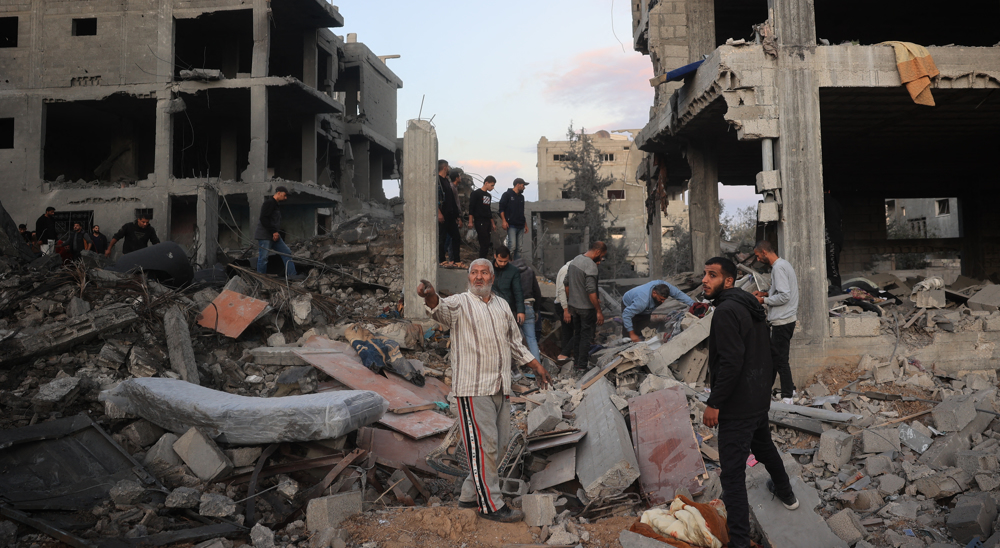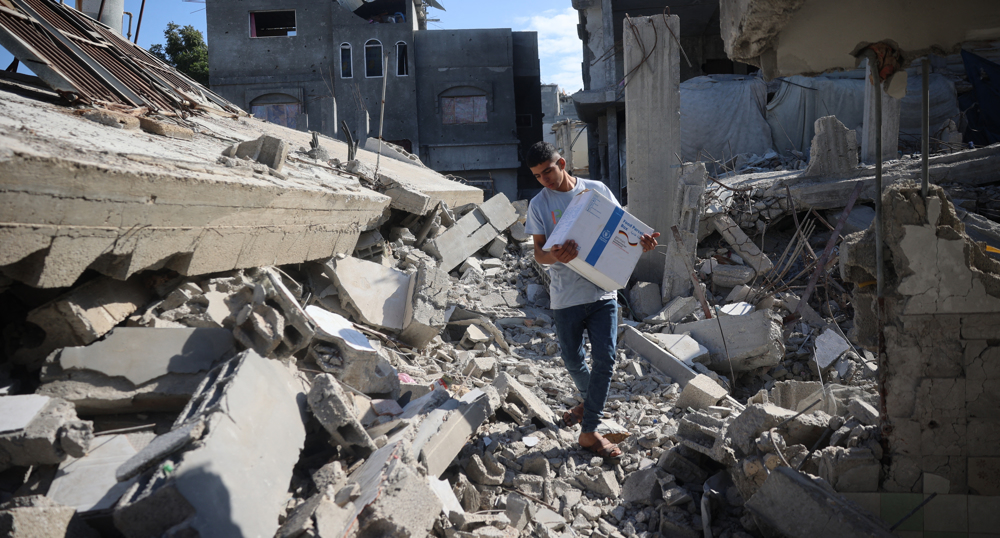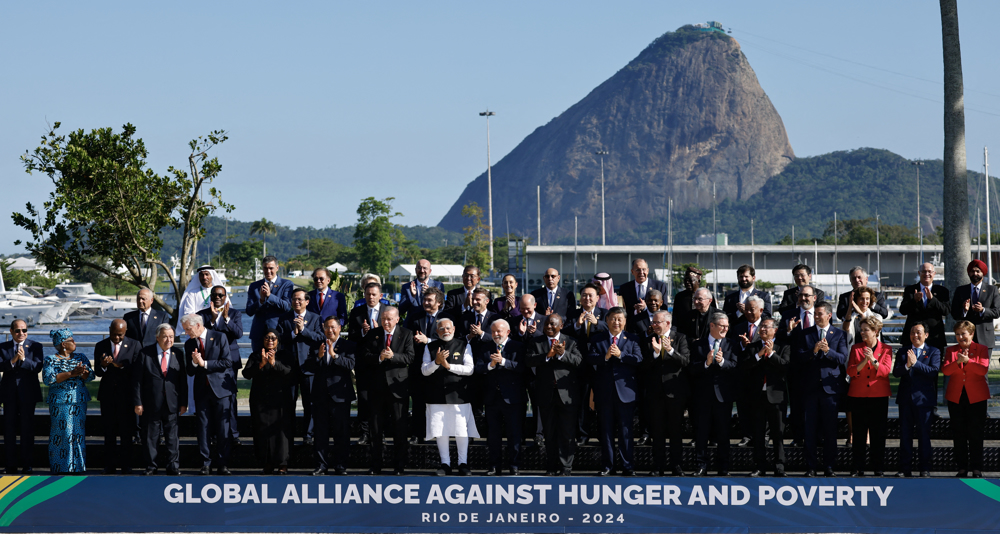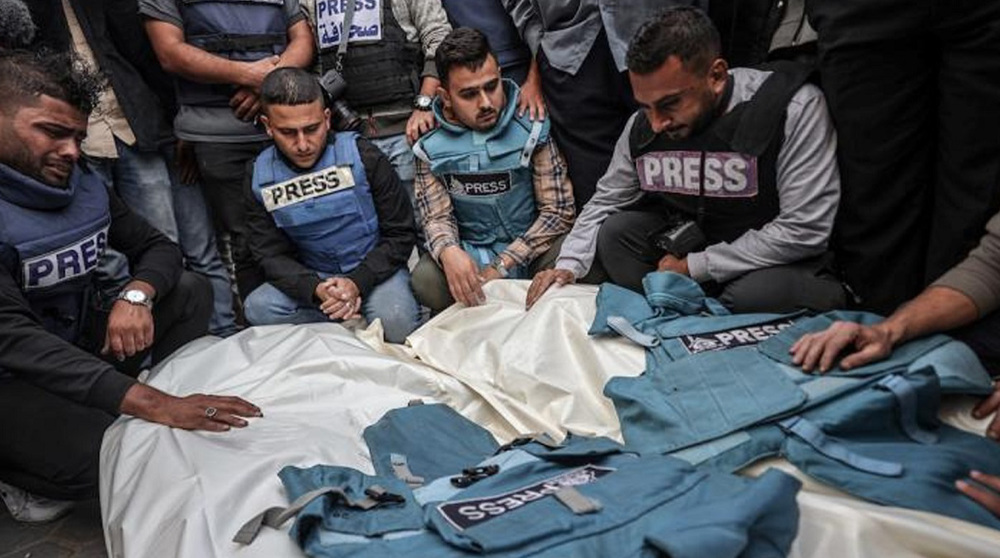How CPJ masks the truth about Palestinian journalists killed by Israel in Gaza
By Alireza Akbari
The Israeli regime persists in silencing the voices of truth in Gaza, targeting messengers armed not with rifles but with pen, paper, and camera—wearing vests boldly marked with "Press."
After nearly 410 days of the genocidal war, the death toll of journalists in the besieged Palestinian territory has risen to 189, making it the deadliest for media practitioners in modern history.
During World War II, 67 journalists were killed while covering the war that stretched for seven years, while the Vietnam War claimed the lives of 63 journalists in 20 years, between 1955 and 1975.
In comparison, the death toll of journalists in the Gaza Strip is many times more and shockingly has failed to trigger anger or outrage from human rights advocates and watchdogs in the West.
The targeted attacks on journalists in Gaza come despite international humanitarian law (IHL) and the Rome Statute, which recognize their status as civilians during armed conflicts, offering them protection.
Article 79 of the Additional Protocol I to the Geneva Conventions emphasizes that journalists engaged in dangerous missions during war should be treated as civilians and granted vital protections.
The health ministry in Gaza estimates that at least 189 journalists have been killed since October 7 last year when the Israeli regime launched its genocidal war on the blockaded coastal territory.
Many other journalists are still missing and most likely trapped under the rubble, according to locals.
Palestinian Journalists Protection Center (PJPC) has also reported that 189 Palestinian journalists have been killed so far, describing their killings as “deliberate, premeditated, and the deadliest” for media practitioners in the past eight decades.
It also asserted that such attacks have become the “main weapon to silence journalists in Gaza.”
The killing of 20-year-old Palestinian journalist Hassan Adburrahim Ali Hamad on October 6 highlighted the peril faced by ground reporters who are exposing the Israeli genocidal war on Gaza.
His murder followed weeks of fearless reporting on the war, and just a day before his death, he had provided crucial footage showing artillery and helicopter gunfire targeting civilian homes.

However, despite the mounting toll of Palestinian journalists in Gaza, the New York City-based Committee to Protect Journalists (CPJ), in its latest report released on November 13, confirmed the deaths of only “137 journalists and media workers.”
CPJ describes itself as an "independent, nonprofit, non-governmental organization," and its figures are widely quoted by media outlets across the world in reports on journalist killings in Gaza.
The figure CPJ cites, however, doesn't align with the figure reported by the Palestinian Journalists Protection Center (PJPC), giving rise to concerns that CPJ may be "manipulating data" to downplay the casualties among journalists in Gaza and threats to press freedom posed by the Israeli regime.
In addition to the low death toll, CPJ's report also noted a surprisingly smaller number of journalists injured, arrested, or missing, stating that “47 journalists were reported injured, 2 were reported missing, and 73 were reported arrested" in the war-battered territory.
CPJ's reports on journalist casualties in the Gaza Strip have prompted many activists to take to social media to express their surprise and outrage, with many referring to the "audacious cover-up."
One described it as a “shameful conspiracy to erase the journalists murdered by Israel in Gaza.”
A social media account by the name ‘Zionism Observer’ in a series of threads in recent months, beginning September 25, aimed to expose how the CPJ has sought to “downgrade and whitewash” the casualties of journalists and media workers in the Gaza Strip.
“Threads related to our campaign to get CPJ to stop lying about Palestinian journalists. We will keep this pinned until CPJ's database of the journalists Israel murdered bears at least a passing resemblance to reality,” the page stated, condemning the CPJ data on slain Palestinian journalists.
✍️ Viewpoint -400 days of Gaza genocide: Ultimate Zionist weapon to silence journalists is murder
— Press TV 🔻 (@PressTV) November 10, 2024
By Iqbal Jassathttps://t.co/eU2xtXtXSF pic.twitter.com/k2KBTuh9rl
It exposed what it termed “taxonomy” by the CPJ to classify murdered journalists in Gaza.
While the media watchdog claims that only four journalists were killed by the Israeli regime in 2024, independent reports suggest the number is significantly higher, with as many as 39 journalists reportedly murdered by the regime in their homes this year.
The group curiously categorizes journalist fatalities into three classifications: “murder,” “crossfire,” and “dangerous assignment.” However, this framework fails to adequately account for journalists killed in their homes, as it categorizes these tragic deaths under “dangerous assignment.”
This classification effectively obscures the reality of the dire situation of journalists in the war-ravaged Palestinian territory placing murdered journalists and their families into the same category, which critics argue amounts to a "significant misrepresentation of facts."
In fact, the majority of journalists killed by the occupation forces in the Gaza Strip since October last year have been classified by the CPJ under “dangerous assignment,” rather than “murder.”
This has been viewed as a "substantial cover-up of the ongoing killing spree perpetrated by the Israeli regime in the besieged Palestinian territory."

Out of the 39 journalists reportedly killed in their own homes, the CPJ designates zero (0 percent) as “murdered.” Instead, it categorizes 18 of these victims—46 percent—as “dangerous assignment.”

Also, the methodology section of CPJ’s website provides justification for this classification, suggesting that the organization is attempting to rationalize its labeling of these killings.

Media observers argue that these misleading classifications fail to "accurately reflect" the realities of targeted violence against journalists, stating that the CPJ has failed to acknowledge over “half of” those killed, equating to an average of “one journalist murdered every other day.”
In order to downplay the death toll of journalists in Gaza, the CPJ has repeatedly cited challenges in documenting casualties, despite the efforts of the shireen.ps website, which has been providing precise figures on the casualties resulting from the ongoing Israeli genocidal war.

Observers have also pointed to the CPJ website's home page which reveals a troubling lack of concern regarding the murder of journalists by the Israeli regime in Gaza and Lebanon.
They say it has devoted significant space to its awards, with a headline reading, “CPJ announces its four 2024 IPFA awardees.”
While the left and right columns of the page focus solely on the awards, the central column also fails to mention the current toll of journalist casualties caused by the Israeli regime.

The group's attempt to downplay or minimize the Israeli killing spree can also be seen in the words of CEO Jodie Ginsberg, who posed this question: “Do you feel Israel is targeting journalists?”
This inquiry came nearly 4 months into the Israeli genocidal war on Gaza and in the wake of a two-week period during which Israel killed at least 13 journalists, including prominent ones such as Yazan Al-Zuwaidi, Muhammad Al-Thalathini, Fouad Abu Khammash, Sharif Okasha, Ahmed Badir, Heba Alabdlah, Muhammad Abu Dayr, and Abdullah Burais.

Ginsberg’s decision to attend the White House Correspondents’ Dinner at the Washington Hilton on April 27 further fueled concerns about her "complicity" in the Israeli killing spree, as observers noted.
It's noteworthy that the Israeli regime has been indiscriminately killing Palestinians in the Gaza Strip, including journalists, with weapons supplied by the United States.
The US complicity in the ongoing genocide has sparked massive protests inside the United States, including on university campuses, but Washington has refused to reconsider its support to Tel Aviv.
Before the White House Correspondents’ Dinner, the Palestinian Journalists Syndicate had sent an email urging the group to boycott the event "in solidarity with Palestinian journalists," but Ginsberg ignored both the email and the accompanying protests.

The CPJ database of murdered journalists gives rise to questions about the "independent" organization’s criteria for including or excluding individuals from its list of murdered journalists.
The CPJ has classified only four of the 78 journalists killed by Israel in 2024 as “murdered,” despite the fact that at least 40 journalists were targeted in their homes and many more outside.
Palestinian rights groups have documented how journalists have been targeted by the regime forces after being identified for reporting on the ongoing genocidal war.
Many of them were murdered along with their families, including women and children.
Looking at the background of CPJ board members, many things become clear, including the organization's censorship of information regarding murdered Palestinian journalists.
Observers say CPJ is engaging in “gatekeeping” regarding the Israeli killing spree in Gaza.
Who are CPJ’s board members
Ginsburg previously served as the CEO of Index Censorship, which claims to campaign for "press expression" and is closely tied to the UK-based Zionist lobby group 'Labour Friends of Israel.'

Lester Holt, a prominent figure at CPJ, is involved in deciding which Palestinians are counted as journalists and which are not, which makes the whole process questionable.

Dan Rather, a senior advisor to CPJ, also plays a role in determining which Palestinians should be included in this count. He has previously been photographed at the Knesset.

Arlene Getz oversees CPJ’s editorial team, reportedly ensuring that most journalists killed by the Israeli regime are categorized as “Dangerous Assignment” rather than “Murder.”

With the impending release of its “Impunity Index” expected by the end of the fall, activists fear the CPJ's potential role in the “largest cover-up” of the Israeli killing spree against journalists.
Each year, the CPJ produces this index, which counts killed journalists under the category of “murder.” However, this classification excludes those categorized under other divisions, leading to a troubling conclusion, according to activists and observers.
According to CPJ's methodology, the Israeli regime killed “only one” journalist in 2024.
In its 2023 classification, the CPJ similarly identified “only one” journalist killed in Lebanon under the category of “murder.” However, when the category shifts to “Dangerous Assignment,” the total number of journalists killed by the Israeli regime rises to 65.
This discrepancy has raised concerns among activists, who argue that CPJ’s use of alternative classifications "obscures the true extent of the killing spree of journalists by the Israeli regime."

Missing journalists in the CPJ database
Among the names notably absent from the CPJ database is Haider Ibrahim al-Masdar, a media researcher and expert on media affairs, who was killed by the Israeli regime on July 22, 2024, in an airstrike that targeted journalists in Deir al-Balah, northern Gaza.
Al-Masdar had contributed articles to Al Jazeera and taught media studies at various universities in Gaza, focusing on Israeli propaganda. His status as a journalist remains unclear in CPJ records.

Another omitted name is Amina Hamid, an editor and poet who was killed on April 24, 2024, along with her two children when an Israeli airstrike struck their home in the Shati refugee camp, northern Gaza.
A few days before her death, Aman appeared in a video clip broadcast by the Israeli news outlet Channel 14 to incite against her and others who spoke and reported about the situation at the Al-Shifa Medical Complex before the Israeli army stormed it on March 9, 2024.

Mohamed Fayez Abu Matar, a freelance photojournalist, was killed in the southern Gaza city of Rafah while covering the Israeli genocidal aggression on October 11, 2023. He is also not included by CPJ.
Audrey Azoulay, Director-General of UNESCO, had condemned the killing of Abu Matar.
"Journalists and media workers play a critical role in informing citizens in times of conflict and must be protected under international law, particularly UN Security Council Resolution 2222/2015 on the protection of journalists, media professionals and associated personnel as civilians in situations of conflict. I call for an independent investigation into this death."

Although his name was initially included in CPJ’s database, it was later removed as part of CPJ’s effort to obscure the systematic targeting of journalists, according to observers.
The Palestinian Journalists Syndicate and UN bodies recognized Abu Matar as a journalist, but CPJ claimed he was “found not to be a journalist.”

Another omission is Mohammed Ghanem Tawfiq al-Jaja, a literal employee of Press House - Palestine, who was killed in an Israeli aggression on November 5, 2023.
He was known for promoting free press and protecting independent media, and he was issued one of their 80 press jackets, which he wore until his burial.

Despite these credentials, CPJ later erased al-Jaja from its database, scandalously claiming he was “not found to be a journalist.”

This pattern of exclusion has raised questions regarding the group's classifications and its broader implications for accountability in the ongoing Israeli killing spree against journalists in the region.
As the organization prepares for a gala event on November 21, hosted by John Oliver, critical questions loom regarding its coverage of “the largest mass murder of journalists in history.”
With days remaining before CPJ’s awards ceremony, the organization faces scrutiny over its record in protecting journalists in Gaza—particularly in light of the ongoing Israeli acts of aggression.
Activists say key questions arise about CPJ's mandate and its coverage of journalist killings in Gaza.
"Why did the organization mass-delete the names of Palestinian journalists from its database on the night of October 2? Can it provide clarity on its rationale for excluding certain Palestinian journalists, citing claims that they were “not found” to be journalists," said Keyhan Amiri, a media activist.
"Will CPJ consider revising its classifications to provide a transparent account of journalists murdered in Gaza, rather than allowing ambiguities to obscure the scale of the ongoing killing spree?"
US senators call to block arms sales to Israel over genocide in Gaza
Iran summons British envoy over shipping sanctions
VIDEO | Aggression vs Lebanon near end?
Afghan refugees benefitting from Iran’s heavy subsidies: Report
NYT kills ‘probe’ into Amsterdam violence unleashed by Israeli hooligans: Report
Iran censures EU, UK’s double standards on arms exports
VIDEO | Press TV's news headlines
Iran, Saudi Arabia reaffirm commitment to China-brokered détente















 This makes it easy to access the Press TV website
This makes it easy to access the Press TV website